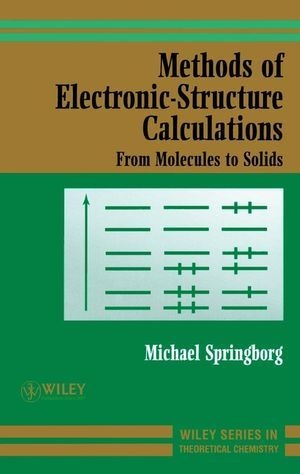Read more
Informationen zum Autor Dr. Michael Springborg heads up of the three groups in Physical Chemistry at the University of Saarland where the main activities concentrate on teaching and research. Klappentext Electronic-structure calculations of the properties of specific materials have become increasingly important over the last 30 years. Although several books on the subject have been published, it is rare to find one that covers in detail both the traditional quantum chemistry and the solid-state physics methods of electronic-structure calculations. This title bridges that gap, focusing equally on both types of method,including density-functional-and Hartree-Fock-based approaches. The book is aimed at final-year undergraduate and postgraduate students of both chemistry and of physics. It describes in detail the fundamentals behind the various methods that are used in calculating electronic properties of materials, and that to some extent are commercially available. It should also be of interest to professional scientists working in related theoretical or experimental fields. Zusammenfassung Im Laufe der vergangenen 30 Jahre hat die Bedeutung von Berechnungen der elektronischen Struktur und der Eigenschaften chemischer Verbindungen ständig zugenommen. Der Autor dieses Bandes gibt hier einen interdisziplinär angelegten Überblick über dieses Grenzgebiet zwischen Chemie und Physik . Schwerpunkte bilden die zugrunde liegenden physikalischen und mathematischen Prinzipien. So lernt der Leser, unter welchen Bedingungen verschiedene methodische Ansätze auf die einzelnen Stoffklassen angewendet werden können. (09/00) Inhaltsverzeichnis Introduction; Operators; Eigenvalues and eigen funtions; Factorization, time- and spin-dependence; Variational principle, Lagrange multipliers; Perturbation theory; Symmetry and group theory; The Schrödinger equation and the Born-Oppenheimer approximation; The Hartree, Hartree-Fock and Hartree-Fock-Roothaan methods; Basis Sets; Semiempirical methods; Creation and annihilation operators; Correlation effects; Where are the electrons and atoms?; Density functional theory; Some simplifications and technical details; Green's Function; Acidity and basicity, hardness and softness; Periodicity and band structures; Structure and forces; Vibrations; Electronic excitations; Relativistic Effects; Molecules and solids in electromagnetic fields; Impurities; Surface and interfaces; Non-periodic, extended systems; Phase diagrams; Clusters; Macromolecules; Interactions; Solvation; Relativistic effects;...

